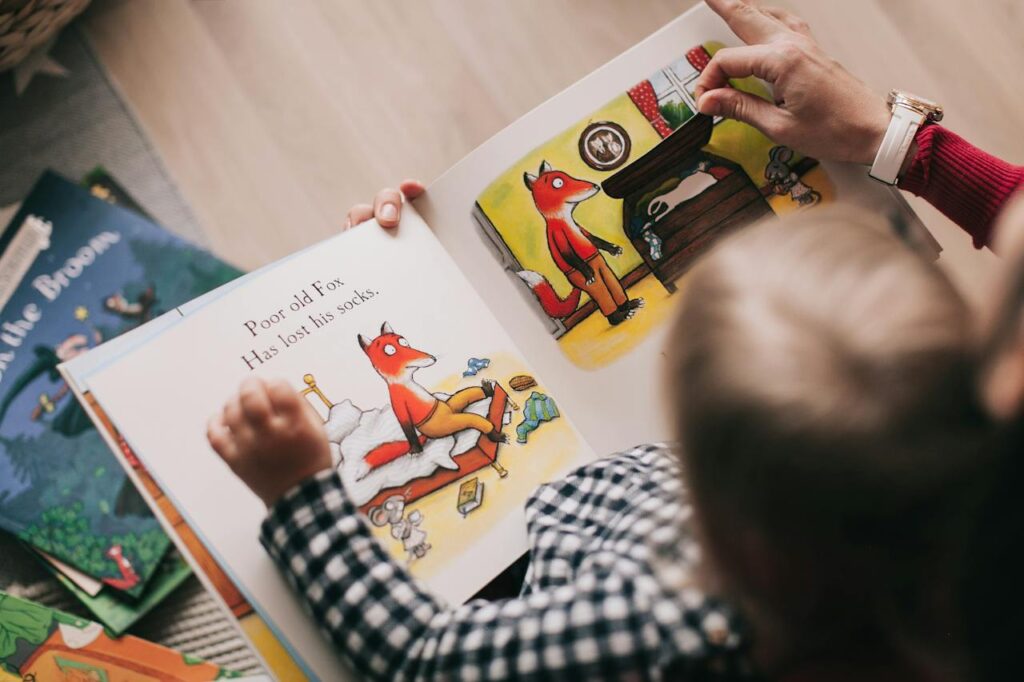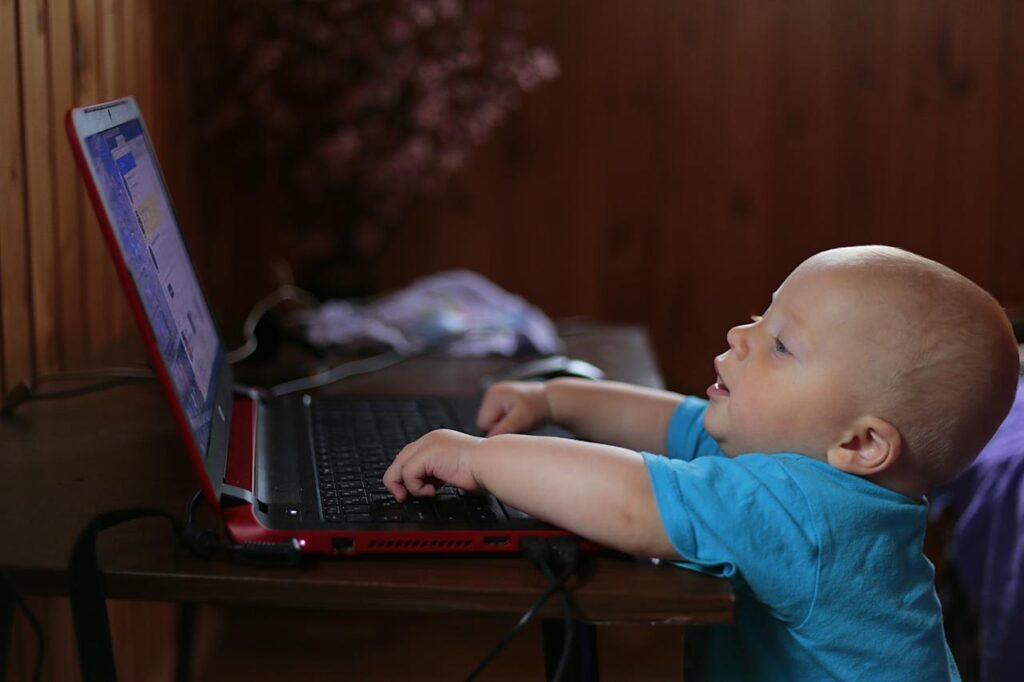Table of Contents

1. Introduction
As parents, we eagerly anticipate the day when our child utters their first word – a milestone that marks the beginning of their language development. But when do children actually start talking? While each child is unique and develops at their own pace, there are certain milestones and patterns that professionals look for to track a child’s language development. In this professional guide, we will explore the typical age range when children start talking and provide insights into the factors that may affect their language acquisition. Understanding these milestones can help parents support their child’s communication skills and ensure they reach their full linguistic potential.
2. The developmental stages of language acquisition in children
Understanding the developmental stages of language acquisition in children can provide valuable insights into their overall language development. While each child progresses at their own pace, there are generally recognized milestones that professionals use to track a child’s progress.
The first stage, known as the prelinguistic stage, occurs from birth to around 12 months. During this period, children develop foundational communication skills, such as making eye contact, babbling, and responding to their name. These early interactions lay the groundwork for later speech development.
Around 12 to 18 months, children typically enter the one-word stage. This is when they start using isolated words to express their needs and desires. As they approach 18 to 24 months, children usually transition into the two-word stage, combining words to form basic phrases.
Between 24 and 36 months, children enter the telegraphic stage, where they begin using simple sentences. Their vocabulary rapidly expands, and they start using more complex grammatical structures.
By the age of three, children typically enter the conversational stage. They can engage in simple conversations, ask questions, and express their thoughts and feelings more effectively.
It’s important to note that these are general guidelines, and every child’s journey is unique. A few youngsters might arrive at these achievements prior or later than others. Nonetheless, recognizing these developmental stages can help parents monitor their child’s progress and identify potential areas for support or intervention if needed.
In the next section, we will discuss the factors that may influence a child’s language development and how parents can provide a nurturing language-rich environment to promote their child’s communication skills.

3. Factors that can influence the timing of a child’s first words
While there are generally recognized milestones for language development, it’s important to recognize that each child’s journey is unique. Various factors can influence the timing of a child’s first words.
Firstly, a child’s exposure to language plays a significant role. Children who are consistently exposed to a rich language environment, with frequent conversations and exposure to diverse vocabulary, are more likely to start talking earlier. On the other hand, limited exposure or lack of interaction can delay language development.
Secondly, a child’s individual temperament and personality can affect their language development. Some children may be more naturally inclined to observe and absorb information before attempting to communicate verbally. This does not necessarily indicate a delay in development, but rather a different approach.
Lastly, any underlying developmental delays, hearing impairments, or speech disorders can impact a child’s ability to start talking. It’s essential for parents to be aware of these potential factors and seek professional guidance if concerns arise.
In the following section, we will explore strategies that parents can use to create a language-rich environment and support their child’s language development.
4. Signs that indicate a child may be ready to start talking
While each child develops language at their own pace, there are certain signs that can indicate they may be ready to start talking. These signs serve as important milestones in a child’s language development and can be exciting for parents to observe. he following are a couple of key signs to pay special attention to:
1. Babbling: Around 6 to 8 months, infants begin to babble, producing repetitive sounds such as “ba-ba” or “da-da.” This babbling is an early form of communication and indicates that a child is starting to explore language.
2. Gesturing: Around 9 to 12 months, children may start using gestures such as pointing or waving to express themselves. This demonstrates an understanding of the connection between words, actions, and objects.
3. Understanding simple instructions: By 12 to 18 months, toddlers may start understanding and following simple instructions, even if they aren’t yet speaking many words. This shows that they are developing receptive language skills.
4. Using single words: Typically, children begin using single words to communicate their wants and needs by 12 to 18 months. These words may not be clear or fully formed, but it’s an important step towards verbal communication.
It’s important to note that not all children progress through these stages at the same rate. If you have concerns about your child’s language development, it’s always best to consult with a speech-language pathologist or other healthcare professionals to address any potential issues early on.
In the next section, we will delve into tips and strategies to encourage and support language development in young children.

5. Strategies for promoting language development in young children
In addition to observing the signs of language development in young children, there are several strategies and techniques that parents can use to promote and support their child’s language growth. These strategies can help create an environment that fosters communication and encourages the development of new words and skills.
One effective strategy is to engage in frequent and meaningful conversations with your child. Converse with them about their day, pose unconditional inquiries, and urge them to offer their viewpoints and sentiments. Additionally, reading aloud to your child regularly can expose them to new words, stimulate their imagination, and enhance their vocabulary.
Another helpful technique is to provide opportunities for your child to interact with other children of a similar age. Through playdates or structured activities, children can learn from each other’s language abilities, imitate new words, and practice their communication skills.
Furthermore, incorporating language-rich activities into your daily routine, such as singing songs, playing word games, or using educational apps, can make language learning enjoyable and fun for your child.
In the following blog section, we will discuss the importance of parental modeling and how it influences a child’s language development.Remain tuned for important bits of knowledge on this subject!
6. When to seek professional help for delayed language development
While it is normal for children to develop language skills at their own pace, there are cases where delayed language development may indicate an underlying issue. It is essential for parents to be aware of the signs that may require professional intervention.
If your child is not meeting the typical language milestones for their age, such as babbling by 12 months or using simple words by 18 months, it is important to consult with a healthcare professional. They can conduct a comprehensive evaluation and determine if there is a need for further assessment or intervention.
Other red flags to watch for include limited vocabulary, difficulty following instructions, or struggling to communicate basic needs and wants. If your child is exhibiting any of these signs, it is crucial to seek guidance from a speech-language pathologist or pediatrician who specializes in language development.
Remember, early intervention is key in addressing language delays, as it can lead to improved outcomes and a smoother language learning journey for your child. It is always better to be proactive and seek professional help if you have concerns about your child’s language development.
Stay tuned for our next blog section, where we will explore effective strategies to enhance language development in children with speech delays.

7. Conclusion: The importance of early intervention and support in language development
Conclusion: The importance of early intervention and support in language development
In conclusion, recognizing the signs of delayed language development in children is crucial for parents. While it is normal for children to develop at their own pace, seeking professional intervention when necessary can make a significant difference in their language learning journey.
By consulting with a healthcare professional, such as a speech-language pathologist or pediatrician specializing in language development, parents can ensure that their child receives a comprehensive evaluation and any necessary further assessment or intervention.
Remember, early intervention is key in addressing language delays. It provides children with the support and resources they need to enhance their language skills and improve outcomes in their communication abilities.
In the next blog section, we will explore effective strategies and techniques to enhance language development in children with speech delays. Stay tuned for insightful tips and practices that can support your child’s language growth.


